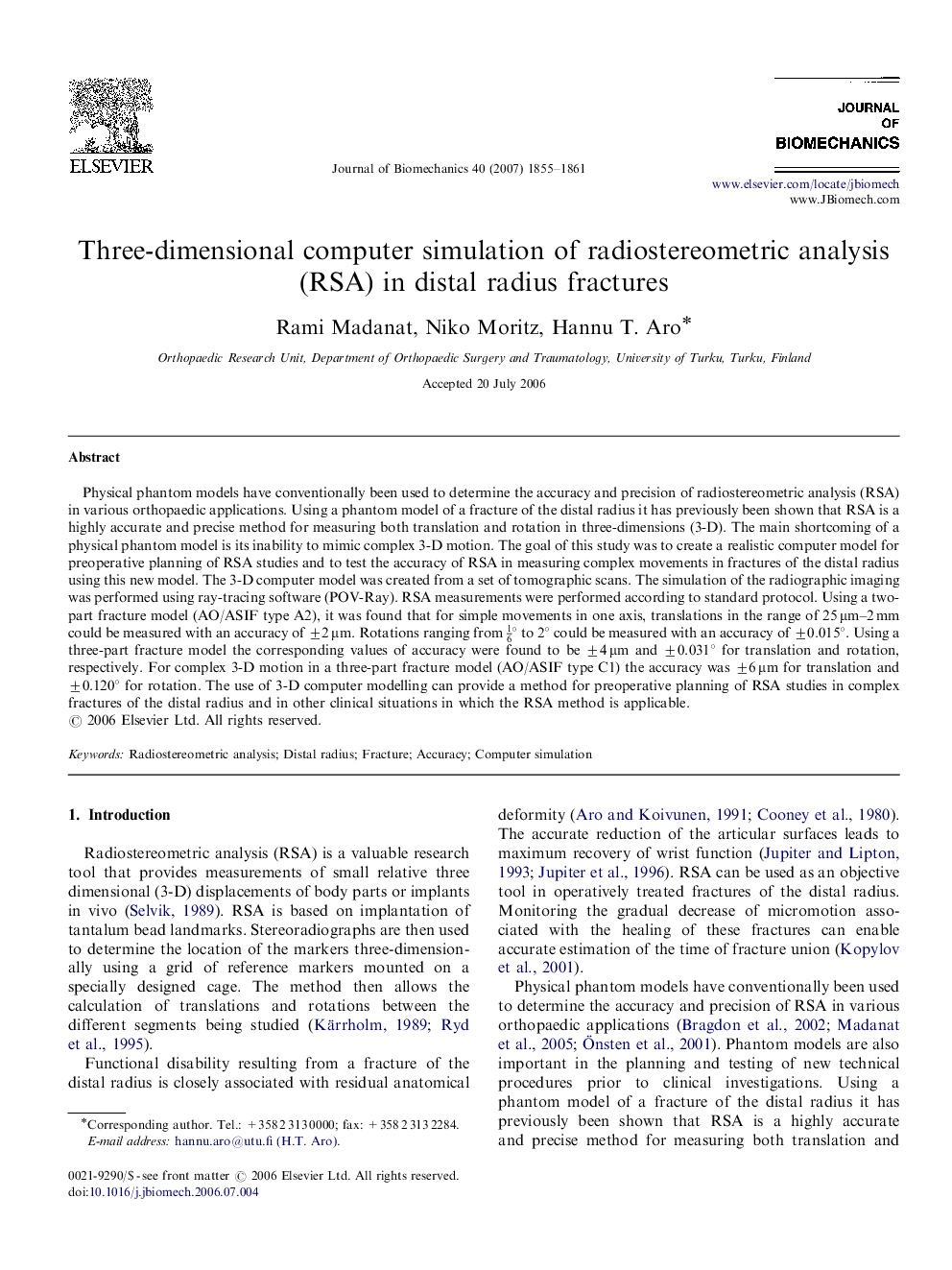| Article ID | Journal | Published Year | Pages | File Type |
|---|---|---|---|---|
| 874383 | Journal of Biomechanics | 2007 | 7 Pages |
Physical phantom models have conventionally been used to determine the accuracy and precision of radiostereometric analysis (RSA) in various orthopaedic applications. Using a phantom model of a fracture of the distal radius it has previously been shown that RSA is a highly accurate and precise method for measuring both translation and rotation in three-dimensions (3-D). The main shortcoming of a physical phantom model is its inability to mimic complex 3-D motion. The goal of this study was to create a realistic computer model for preoperative planning of RSA studies and to test the accuracy of RSA in measuring complex movements in fractures of the distal radius using this new model. The 3-D computer model was created from a set of tomographic scans. The simulation of the radiographic imaging was performed using ray-tracing software (POV-Ray). RSA measurements were performed according to standard protocol. Using a two-part fracture model (AO/ASIF type A2), it was found that for simple movements in one axis, translations in the range of 25 μm–2 mm could be measured with an accuracy of ±2 μm. Rotations ranging from 16° to 2° could be measured with an accuracy of ±0.015°. Using a three-part fracture model the corresponding values of accuracy were found to be ±4 μm and ±0.031° for translation and rotation, respectively. For complex 3-D motion in a three-part fracture model (AO/ASIF type C1) the accuracy was ±6 μm for translation and ±0.120° for rotation. The use of 3-D computer modelling can provide a method for preoperative planning of RSA studies in complex fractures of the distal radius and in other clinical situations in which the RSA method is applicable.
